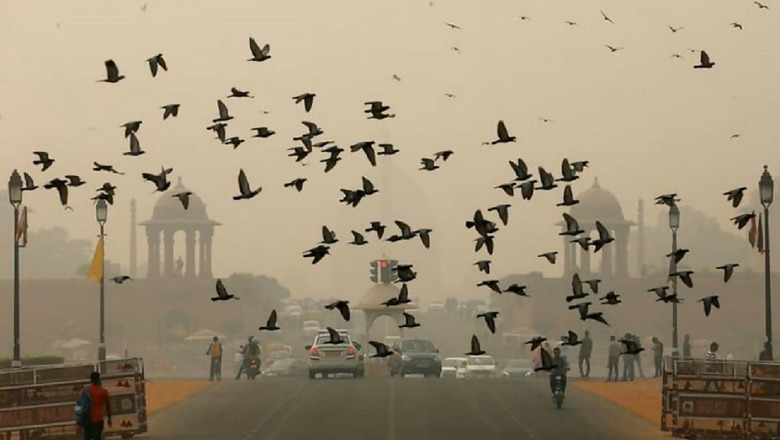
views
New Delhi: A delay in the monsoon’s withdrawal from western Rajasthan may have shielded Delhi from conditions that are unfavourable for its air quality. But the scenario will not last for long. The India Meteorological Department (IMD) on Wednesday said that conditions are becoming favourable for the withdrawal of southwest monsoon from West Rajasthan from September 28 onwards.
The air quality early warning systems of the Ministry of Earth Sciences as well as government scientists have said the wind directions are likely to change in a day or two from easterly-southeasterly to northerly and northwesterly direction. This is likely to spur a gradual deterioration in Delhi’s air quality from September 26 onwards.
With the beginning of monsoon’s withdrawal, the northwest and northern regions of India, including the Delhi-NCR, enter a transitional weather phase wherein winds become slower and drier, helping accumulation of pollutants, local and non-local. The air quality over this large landmass becomes toxic from October onwards due to the high concentration of local pollutants and due to the burning of stubble farming that occurs during the harvest of paddy in Punjab and Haryana. With unfavourable winds, it becomes easier for the winds to get transported southwards, across Delhi-NCR and the Indo-Gangetic plains.
The government’s early warning forecast, run by Indian Institute of Tropical Management and IMD, has also shown that there is likely to be some amount of dust incursion into Rajasthan and Delhi-NCR from Afghanistan and Pakistan. “As winds change direction and their speed drops, it will help in accumulation of local pollutants. At the same time, there might be some incursion of dust from western areas bordering Pakistan. This incursion though will not lead to an exponential rise in pollution in Delhi-NCR,” a government scientist said on the condition of anonymity.
This week, the predominant surface winds in Delhi have been coming from southeast and east direction. These winds, in the range of 8-12 kmph, have helped disperse local pollutants. The favourable winds have helped Delhi’s air quality index (AQI), a broad indicator of the pollution levels, to be in the ‘satisfactory’ category. SAFAR (System of Air Quality and Weather Forecasting and Research) said on Thursday that the AQI was likely to stay in the satisfactory to moderate category on Friday, and predicted a marginal deterioration by Saturday and Sunday. It added that the isolated stubble burning incidents recorded in Amritsar district will not have any significant impact on Delhi this week.
Burning of farm stubble in Punjab and Haryana usually begins in the second week of October and is at its peak during up to early first week of November. Farmers who are unable to afford machinery or labour to manage the farm stubble engage in the practice of stubble farming to prepare their farms for wheat sowing for the upcoming Rabi season. Last year, 44 per cent of Delhi’s PM 2.5 load was attributed to stubble burning in Punjab and Haryana.




















Comments
0 comment